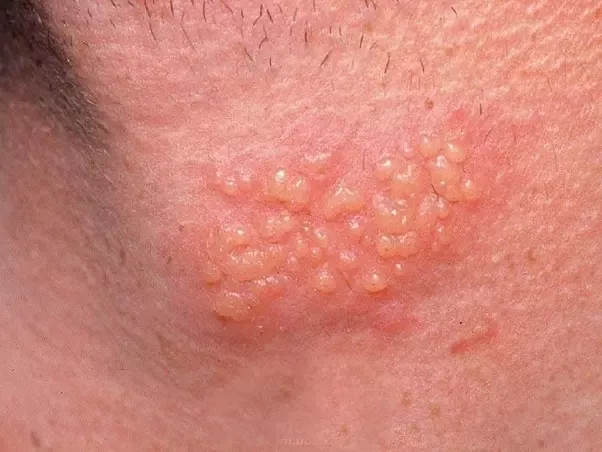Battle the Bumps: A Parent’s Guide to Impetigo and Cold Sores
Hello wonderful parents! ? If you’re on a quest to defend your kiddos against those pesky skin troubles—impetigo and cold sores—you’re in the right place. Being a parent is like being a superhero, and every superhero needs a guide! Let’s dive into the world of impetigo and cold sores with smiles on our faces and lots of useful info to tackle them head-on.
What is Impetigo?
Impetigo is like the clingy playdate guest that just doesn’t want to leave. It’s a common and highly contagious skin infection that can make an appearance on your child’s skin, especially in the warm and cozy areas around the nose and mouth. But fear not! By learning about this condition, you’ll be well-prepared to send it packing.
Recognizing Impetigo
- Little red sores that quickly become blisters, then crust over with a golden-brown color
- Itchy, and sometimes painful rash
- Oozing blisters that may spread to other parts of the body
Impetigo usually stars the bacteria Staphylococcus aureus or Streptococcus pyogenes, which are like the playground bullies of the bacterial world. And, just like bullies, good hygiene can often keep them away.
What about Cold Sores?
Cold sores, on the other hand, are like unwelcome visitors that keep showing up at holidays. These small blisters are caused by the herpes simplex virus (HSV), which takes up residence in the body and can pop up from time to time, especially when the immune system is having a bit of a day off.
Spotting Cold Sores
- Grouped blisters on a red base, usually around the lips or under the nose
- Tingling or itching sensation before the blisters appear
- Fluid-filled blisters that crust over after several days
Although cold sores are a lifelong guest once they move in, the good news is, their visits can become less frequent with time and care. And no, they’re not invited to the birthday parties.
Preventing the Spread
When it comes to impetigo and cold sores, sharing is not caring. Both of these conditions love to travel from one person to another faster than the latest playground rumor. Simple steps can help prevent the spread:
Top Tips for Prevention
- Emphasize handwashing: Regular and thorough handwashing can be the shield your child needs.
- Keep it to themselves: Encourage not sharing personal items like towels, lip balms, or face cloths.
- Commit to clean: Keep infected areas clean and covered with a non-stick bandage during the contagious phase.
- Avoid touching: Remind kids to avoid touching the sores, and if they do, wash those hands!
Preventing spread boils down to good hygiene and awareness—key allies in the battle against these skin conditions.
This starter guide lays out the essential information on impetigo and cold sores to help parents understand and manage these common conditions in children with positivity and prudence!

Five Essential Things Every Parent Should Know
Arming yourself with knowledge is the first step to efficiently dealing with impetigo and cold sores. Here are five critical things you should know:
1. Understanding the Causes
Impetigo is primarily caused by two types of bacteria, Staphylococcus aureus or Streptococcus pyogenes. These bacteria can enter through cuts or insect bites, or even healthy skin. On the flip side, HSV-1, a seriously clingy virus, is responsible for cold sores and enters the body through close personal contact, like cuddles or kisses from infected family members.
2. Timing is Key: The Contagious Phase
Impetigo is contagious as long as the rash is present and until the sores have healed. Cold sores are most contagious when they burst, but can still spread the virus even when there’s no sign of a sore. Be alert and take precautions to prevent transmission. The quicker you act, the easier it will be to keep everyone else safe.
3. Treatment Options
Impetigo often requires antibiotic ointment or oral antibiotics based on your healthcare provider’s advice. For cold sores, antiviral creams or tablets can help shorten the outbreak and relieve the symptoms. Consult your child’s pediatrician for appropriate treatment, which will help stop the spread and speed up the healing process.
4. Home Care Strategies
For impetigo, daily cleaning of infected areas, removing crusts gently, and applying prescribed ointment are crucial steps. With cold sores, keeping them dry and clean, applying cold compresses, and using antiviral creams can provide comfort. Remember, home care goes hand-in-hand with medical treatment.
5. Importance of Education and Empathy
Teach your children about these skin conditions and the importance of personal hygiene without creating fear. Approach the subject with empathy and understanding, reassuring them that these conditions are common and treatable. This will help them become more independent in managing their symptoms and applying the necessary precautions.
When to See a Doctor
It’s always wise to see a doctor when you’re unsure about a skin condition affecting your child. Here’s when you should definitely seek medical advice:
- When you first suspect your child has impetigo or a cold sore
- When sores are painful, numerous, or spreading
- If the child has a fever or appears unwell
- If home treatments don’t seem to be effective
- When you have concerns about recurring cold sores or the frequency of impetigo infections
Keeping Up With School and Play
It’s a tricky balance to ensure your child doesn’t miss out on valuable school time or play while also preventing the spread of infection. Communicate with your child’s school about their condition. Often, once treatment has begun and the affected area can be reliably covered, children can continue their school activities. But always follow the advice of your child’s health care provider and your school’s policies.
Living and Learning
As a parent, dealing with impetigo and cold sores can be stressful, but remember, you’re not alone. These are common conditions, and with prompt treatment and good hygiene habits, your child can enjoy a happy, healthy life without significant disruptions. Be prepared, stay informed, and keep that superhero cape ready—you’ve got this!
See more great Things to Do with Kids in New Zealand here. For more information see here
Disclaimer
The articles available via our website provide general information only and we strongly urge readers to exercise caution and conduct their own thorough research and fact-checking. The information presented should not be taken as absolute truth, and, to the maximum extent permitted by law, we will not be held liable for any inaccuracies or errors in the content. It is essential for individuals to independently verify and validate the information before making any decisions or taking any actions based on the articles.




